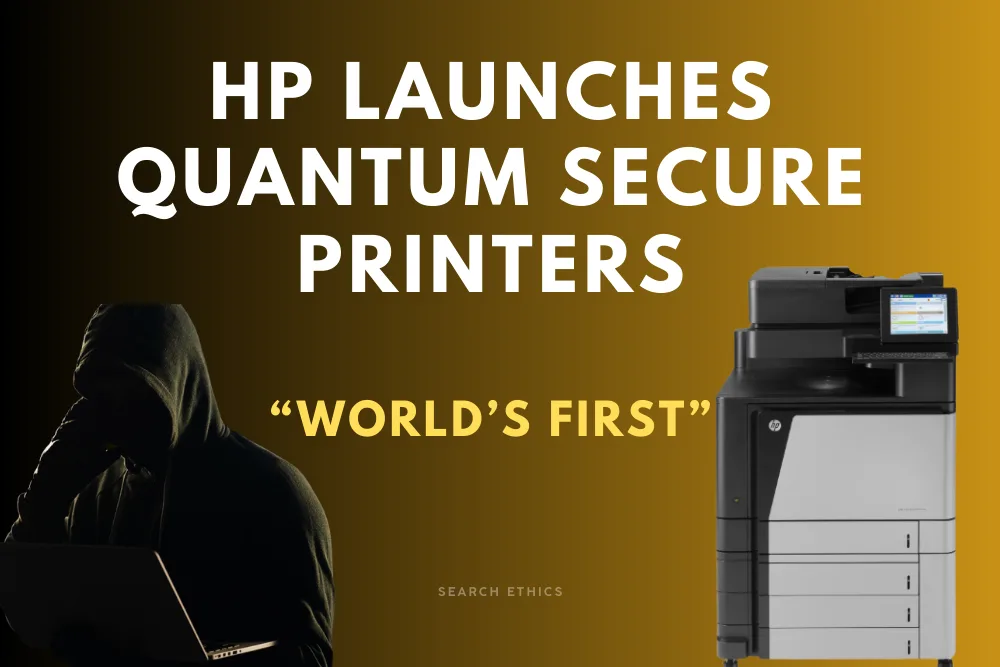Now Reading: HP Launches World’s First Printers to Protect Against Quantum Computer Attacks
-
01
HP Launches World’s First Printers to Protect Against Quantum Computer Attacks
HP Launches World’s First Printers to Protect Against Quantum Computer Attacks

At HP Amplify 2025, HP made a groundbreaking announcement: the launch of the world’s first printers designed to defend against quantum computer attacks. This significant milestone sets a new benchmark in enterprise print security, safeguarding organizations from one of the most formidable cybersecurity threats on the horizon.
Why Quantum-Resistant Security Matters
As quantum computing rapidly advances, the possibility of it breaking today’s widely used asymmetric cryptography becomes more realistic. Experts estimate there’s up to a 34% chance that quantum computers could crack current encryption standards by 2034. This development could:
-
Jeopardize secure communications,
-
Undermine digital signatures critical for verifying firmware and software,
-
And ultimately dismantle digital trust across IT environments.
Without quantum-resilient technology, even something as essential as a printer could be compromised at the firmware level—leaving it vulnerable to malicious updates and granting attackers full control.
Introducing the HP 8000 Series: Future-Ready, Quantum-Safe Printing
HP’s latest innovation, the HP 8000 Series printers, including the Color LaserJet Enterprise MFP 8801, Mono MFP 8601, and LaserJet Pro Mono SFP 8501, are built to be quantum-resilient from the ground up.
Here’s how they’re redefining print security:
Quantum-Resistant ASIC Chips
At the heart of these printers are advanced ASIC chips designed to support quantum-resistant cryptography. These chips enable digital signature verification, ensuring firmware integrity and shielding devices from quantum-based tampering.
Hardware-Level Protection
The new chips also secure core components like the BIOS and boot firmware, delivering deep hardware-level security and helping to prevent data breaches before they can begin.
Seamless Zero Trust Integration
Built on HP’s Zero Trust Print Architecture, these printers are engineered to fit effortlessly into Zero Trust Network Architectures. This allows organizations to implement fleet-wide protection, strengthening defenses across their print infrastructure.
HP’s Broader Security Vision
This printer launch aligns with HP’s broader security initiative to embed quantum-resistant algorithms throughout its product ecosystem. Following last year’s launch of the world’s first PCs with quantum-safe firmware protection, HP continues to lead the charge toward a quantum-secure future.
Preparing for the Quantum Era: A Call to Action
Governments and enterprises alike are preparing for the quantum leap. In fact, starting in 2027, the U.S. federal government will only procure National Security System devices secured with quantum-resistant cryptographic code signing.
For businesses under Managed Print Services (MPS) or long-term hardware contracts (typically 3–5 years), now is the time to begin transitioning to quantum-resilient technology. Doing so will not only meet regulatory standards but also maximize security and future-proof your print environment.
Final Note
HP’s quantum-resistant printers represent a proactive leap into the future of cybersecurity. By integrating next-gen cryptography, firmware protection, and Zero Trust principles, HP is empowering organizations to stay ahead of emerging threats—and secure their digital ecosystems before quantum computers become an everyday reality.
You may also like to hear about Nintendo Switch 2 specification and features guide
Dony Garvasis is the founder of Search Ethics, a platform dedicated to transparency, authenticity, and ethical digital practices. With over six years of experience in SEO and digital marketing, I provide expert content on automobiles, technology, gadgets, and online strategies. My mission is simple: Ethical Search, Genuine Results—ensuring users worldwide receive credible, useful, and up-to-date content.










